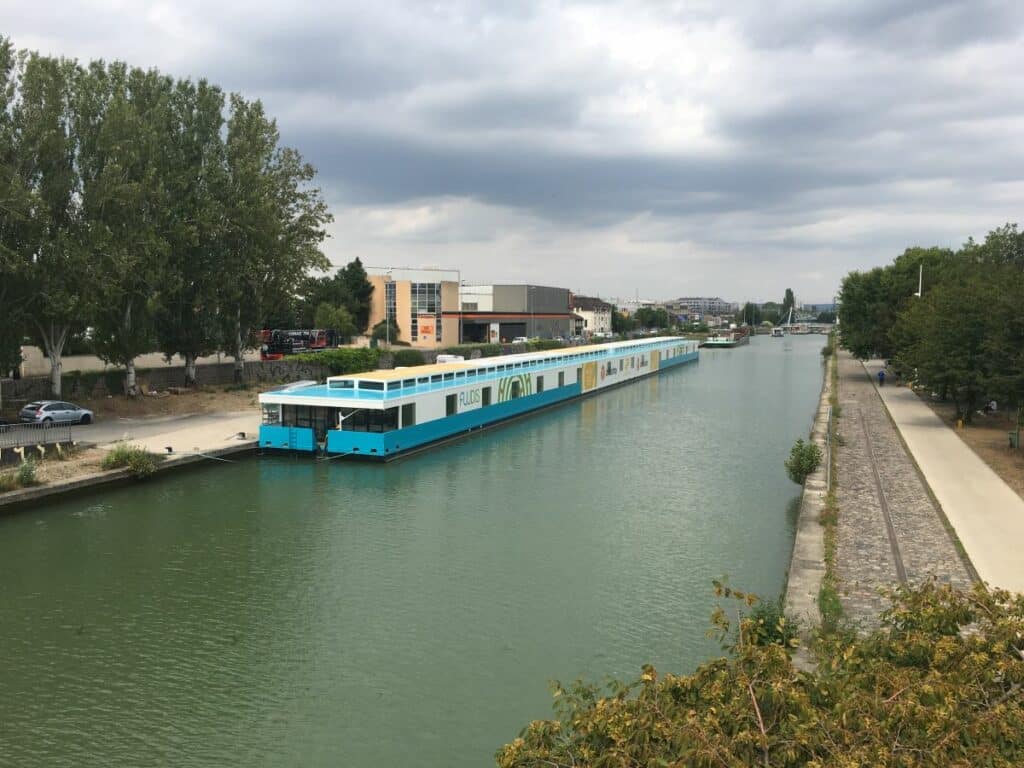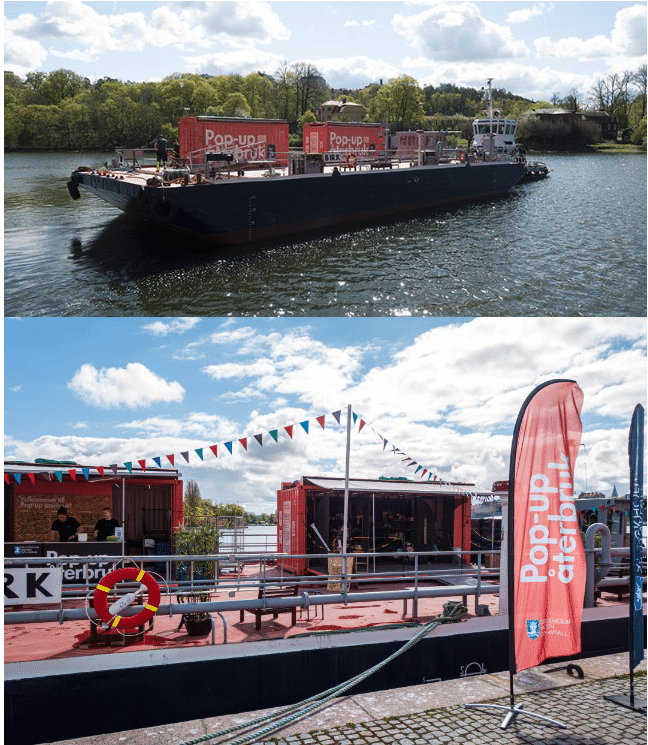Join JPI UE
Faq
FAQ
Please click here for the frequently asked questions we collected.
If you have an additional questions you are welcome to mail us at info@jpi-urbaneurope.eu
We spoke with Susanne Wrighton, one of the project’s coordinators, to explore how ASAP is revitalising these dormant resources across four European cities (Hamburg, Paris, Stockholm, and Vienna). From forgotten waterways and abandoned buildings to public vehicles idling between routes, Susanne describes an urban landscape teeming with opportunities waiting to be uncovered and refashioned into assets for overcoming logistical hurdles in the way of a more sustainable future.
Identifying barriers to awakening sleeping assets
One of the first key project outputs was a comprehensive review, meticulously categorising potential sleeping assets and delving into the barriers impeding their implementation. This foundational work involved conducting 13 expert interviews across the 4 partner cities with individuals from city departments such as urban development, urban planning, real estate management, and traffic. Additional participants included representatives from real estate companies, residential construction and management organisations, a consultant and academic expert in maritime and last mile logistics, and a member from a chamber of commerce. This diverse input has proven invaluable for the project’s cities and stakeholders in their quest to tap into the potential of their underutilised spaces.
The interviews refined the collaborative processes. “We asked stakeholders mainly about the barriers facing these different types of sleeping assets—implementation barriers, user resistance barriers, financial barriers, and any political and legislative barriers,” Susanne explains. Having these perspectives was crucial for overcoming obstacles.
Recognising the importance of stakeholder involvement, the ASAP project facilitated numerous workshops across partner cities, including 10 sessions in Stockholm and 8 in Vienna. The workshops included individuals in various city departments involved in the testbeds, such as waste management, urban freight flows, and smart loading zones. These workshops gathered invaluable input and served as the basis for effectively refining guidelines on conducting such collaborative endeavours. The project has even prepared customised guidelines and PowerPoints to aid future city administrations in running such sessions.

SmaLa – Smart Loading Zones Hamburg (Image/Source: BWI)
Paving the Way for Sustainable Urban Logistics
The project understood relatively early on that awakening sleeping assets had to be accompanied by responsible climate action. Currently, in efforts to tackle both issues simultaneously, many cities are turning to sustainable urban logistics plans (SULPs). These are strategic blueprints for coordinating freight and goods movement within urban areas, offering policymakers a pathway for achieving logistics and climate goals.
However, Susanne notes, “SULPs are known for being difficult because they don’t only involve stakeholders that a city controls, like with mobility plans. They usually also have many private logistics operators involved.” Historically, cities haven’t had much oversight of logistics operations within their boundaries. “Cities just didn’t get involved a lot in logistic issues,” Susanne explains, but “with problems like climate change, more and more cities now have to try to get a hold on these logistic issues as well.”
This is where the ASAP project has made strides. The project has produced a promising report analysing the current state of SULPs, identifying gaps and shortcomings, and exploring how they can be better integrated with the United Nations’ Sustainable Development Goals (SDGs). This report is now publicly available and offers a starting point for cities and policymakers looking to develop or refine their strategic logistics plans sustainably.
Putting Ideas to the Test
Integral to ASAP’s approach is the use of “testbeds;” these are pilot projects and living labs that allow cities to experiment with activating underutilised resources and infrastructure in real-world logistics applications. Susanna explains, “Many cities in our project had testbeds already running, which was a real success factor because they could implement and analyse these innovative solutions.”
To guide cities in launching their own testbeds, ASAP has developed a comprehensive guideline covering every step of the initiation and implementation process. “It’s a very, very detailed document assisting the initial idea [phase] and explains who needs to be involved, with checklists for each stage,” Susanne notes. The guidelines will soon be freely available on the project’s website. Making the document accessible to policymakers is a key aim of the project, so they are also producing a shorter version of the guidelines to offer policymakers a preliminary understanding of what is required for a successful testbed.
However, testbeds involve more than just activating sleeping assets – simulations are vital for modelling potential impacts. The project has conducted numerous simulations analysing real-world testbeds like floating pop-up recycling barges, connected freight parking zones, and micro-hub distribution networks. Partners like BOKU in Vienna simulated optimising factors like the positioning and frequency of the recycling barges to enhance viability and reduce emissions. Susanne says, “They are mathematical models analysing these testbed scenarios the cities want to implement.” “These models allow cities to forecast aspects like CO2 emissions savings and cost-effectiveness to make data-driven decisions.
While simulations offer theoretical insights, ASAP’s testbeds have already demonstrated first-hand the transformative power of activating sleeping assets. One pioneering example is a collaboration with FLUDIS, a Paris-based company that transports parcels via an innovative cargo bike and waterway combination. Susanne describes how “they’re using the Seine River to transport parcels by ship, with cargo bikes sorted with parcels.” She says, “the bikes go into different districts after the ship stops at certain points.” This creative testbed is achieving measurable reductions in emissions and fuel use.

Fludis – Floating warehouse to store and sort parcels that will later be distributed by cargo bikes. (Image/ Source: Fluids)
Harnessing Innovative Tech
Recognising the pivotal role of technology in sustainable logistics, the ASAP project has also delivered a comprehensive overview of opportunities for new technologies and IT solutions under the title “Opportunities for New Technologies and C-ITS.” The report highlights innovative examples like using mobile data from freight vehicles in Stockholm to map “logistics hotspots” and a parking management platform that enables users to book and confirm usage of loading zones for commercial vehicles via a smartphone app and Bluetooth connectivity.
This report provides a valuable resource for cities aiming to pair the reawakening of “sleeping assets” with cutting-edge tools and platforms to holistically improve logistics efficiency and sustainability.

Floating Pop-up recycling Stockholm (Image/Source: Stockholm / SVOA (Stockholm Vatten och Avfall))
The Road Ahead: Forging an Enduring Legacy
As the project nears its conclusion, a critical challenge emerges, ensuring the longevity and accessibility of its invaluable findings. Susanne passionately advocates for creating a centralised, EU-led repository to preserve and disseminate the wealth of knowledge generated by projects like ASAP.
She confides, “There’s all this money invested in these projects, and in the end, much of this information is lost. New projects are often started years later with exactly the same theme because nobody knows that a similar project had already come to similar conclusions a few years ago.”
To combat the loss of knowledge, the ASAP project initially planned to develop a SULP platform—a centralised hub for hosting all project materials, data, and information on testbeds and pilot projects. However, due to concerns about the longevity of such a platform and the potential loss of information over time, the decision was made to transition the created knowledge and information to a site with a longer ‘half-life’. The project team is currently seeking an organisation or platform that is expected to remain operational for many years to come. This approach aims to ensure that the resource remains invaluable for cities seeking to create or enhance their own SULPs, providing detailed insights into stakeholder involvement, implementation processes, and best practices long after the project concludes.
As cities worldwide grapple with sustainability, congestion, and resource optimisation challenges, the ASAP project is a hopeful example, illuminating a path towards smarter, more efficient, and more sustainable urban logistics. By awakening the potential of sleeping assets and fostering collaborative innovation, this endeavour has paved the way for cities to reimagine their underutilised spaces, unlocking new avenues for growth, resilience, and environmental stewardship.